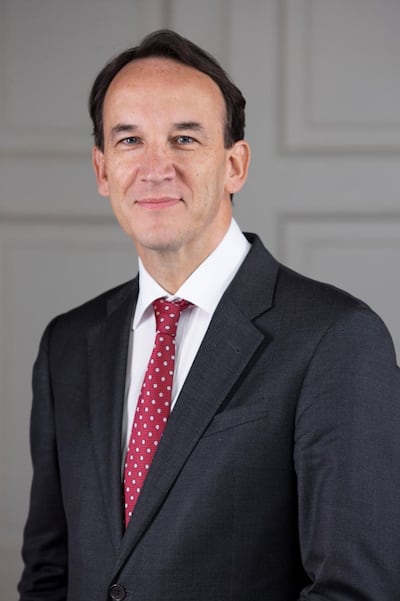Prof Arnie Hill, breast cancer surgeon and head of the medical school at the Royal College of Surgeons for Ireland, jokes that many women with breast cancer could almost have a degree in breast cancer following their treatment, such is the amount of knowledge gained throughout the experience.

Learning about the type of breast cancer you have is just the start of a journey to understand different cancer drugs, the appropriateness or not of chemotherapy and the types of surgery, as ongoing research changes the approach to breast cancer.

One of the most exciting developments in recent years is the OncoType DX test. This genetic test on tumour tissue clarifies whether chemotherapy is necessary or not. “The oncotype test reduces the amount of chemotherapy given for breast cancer by 50 per cent,” explains Prof Hill.
This is a game changer in the treatment of breast cancer as previously – in spite of clinicians’ views that many women didn’t need chemotherapy – most women chose to have it for the 3-5 per cent chance that it would improve their survival rates. “The Oncotype test proves which type of breast cancer a woman has. And now we know that chemotherapy is beneficial for early breast cancers (such as HER2-negative, ER-positive and node negative breast cancers – see definitions below) which make up about 45 per cent of diagnosed breast cancers,” explains Prof Hill.
Cara McAdam says that she researched all the papers and clinical trials when she was diagnosed with HER2-positive breast cancer. “I’m a biology teacher and I remember thinking this would be very interesting if it wasn’t happening to me.”

She was dreading chemotherapy, having read about the severe side effects of adriamycin cyclophosphamide (AC) chemotherapy so was relieved to find out that she would only be administered a newer chemotherapy drug, Taxol (paclitaxel).
“I had a grade three tumour so chemotherapy was needed but I benefited from trials that showed the recurrence rates were equal with or without AC chemotherapy which meant I didn’t have to have AC chemotherapy.”
Naoise Coogan (46), who works in corporate communications for Glanbia, feels very grateful for the Oncotype DX test. "It made a massive difference to my diagnosis. I found a lump under my arm five years ago and had a triple assessment – clinical assessment, mammogram and ultrasound – within two weeks. A biopsy of my cancer [ductal carcinoma] was sent to San Francisco for analysis and the Oncotest DX result came back with a low reading meaning that it wouldn't be beneficial to have chemotherapy," explains Coogan.
Women in Ireland now have greater opportunities to have reconstructive surgery than they would have had ten years ago
She says that she had two young children at the time and didn’t want to look sick. “I went into hospital as a day case for a lumpectomy and to have lymph nodes removed and then started 7 weeks of radiation six weeks later,” explains Coogan. Five years free of cancer, Coogan will continue to take hormonal drugs, Tamoxifen for another five years.
Another development in breast cancer in the last 10 years is the ability to treat some HER2-positive breast cancer with drugs alone. “There is a panel of drugs which have proven to be effective for this subset of 20 per cent of breast cancers. We are now at the stage that 50 per cent of these patients will respond to drugs alone making them the first group of breast cancer patients to avoid surgery,” explains Prof Hill. These patients will continue to have chemotherapy treatments alongside their medication for four to five months.
Women in Ireland who do, however, need to have mastectomy to remove malignant tumours from their breast now have greater opportunities to have reconstructive surgery than they would have had ten years ago. "We now have six plastic surgeons at Beaumont Hospital compared with one plastic surgeon when I started here in 2005," says Prof Hill. The standard reconstructive surgery now involves taking fat tissue from the woman's lower amdomen (tummy) to reconstruct the breast. It involves a four hour operation and four days in hospital. About one in three women who have had breast cancer surgery opt to have reconstructive surgery.
Triple-negative breast cancer which is breast cancer that doesn’t have oestrogen, progesterone or HER2 receptors is one of the more aggressive and most difficult to treat forms of breast cancer. Currently, researchers at Queen’s University Belfast (QUB) are studying new treatments for this sub-group of breast cancer patients.
“This is one type of breast cancer that we don’t have immediate answers on which is why Breast Cancer Ireland is funding the research at QUB. We need to look at different pathways in the cell and introduce new drugs to block these pathways,” explains Prof Hill.
Through its research and education programmes, Breast Cancer Ireland wants to help transform breast cancer from what can be a fatal disease to one that can be managed and cured throughout treatment. A new Breast Cancer Ireland research centre in the grounds of Beaumont Hospital is due to be completed in 2021.
As part of the annual fundraising, the Great Pink Run (a 5km or 10km) is held every year, with 10,000 taking part in 2020 between three venues – Dublin's Phoenix Park, Kilkenny Castle Park, and Diversey Harbor, Chicago. This year will be the 10th staging of the event, but, of course, it will have to be very different. Still, it is hoped the virtual staging – on October 17th and 18th – will continue to be well supported (see greatpinkrun.ie to register).
Explainer: different types of breast cancer
Breast cancer is described as invasive or non-invasive. Invasive breast cancer means the cancer cells have moved beyond the lining of the milk ducts and invaded the surrounding breast tissue. The sub-types of invasive breast cancer are invasive ductal carcinoma – the most common type of breast cancer – which invades the surrounding breast tissue and the rarer invasive lobular breast cancer which is more likely to be spread throughout the breast. The main non-invasive breast cancer is ductal carcinoma. Metastatic breast cancer is breast cancer that has spread (metastasized) beyond the breast. About 5 per cent of breast cancers are caused by faulty genes, the most common of which are BRCA1 and BRCA2 genes.
Breast cancer specialists also define the different types of breast cancer according to the parts of the cell the cancer responds to.
– HER2-positive breast cancer is breast cancer that tests positive for a protein called human epidermal growth factor receptor 2 (HER2). This protein promotes the growth of cancer cells. In about one in five breast cancers, the cancer cells have extra copies of the gene that makes the HER2 protein. HER2-negative breast cancer is breast cancer that tests negative for HER2 protein.
– ER-positive breast cancer is breast cancer that has receptors for the female hormone, estrogen (oestrogen). ER-negative breast cancer is breast cancer that doesn't have estrogen receptors.
– PR-positive breast cancer is breast cancer that has receptors for the female hormone, progesterone. PR-negative breast cancer is breast cancer that doesn't have progesterone receptors.
– Node-positive breast cancer is breast cancer which has spread to the lymph nodes under the arms. When lymph nodes are clear of cancer, this is called node negative breast cancer.
– Triple-positive breast cancer is breast cancer that has oestrogen, progesterone and HER2 receptors. Triple-negative breast cancer is breast cancer that doesn't have receptors for oestrogen, progesterone or HER2.









